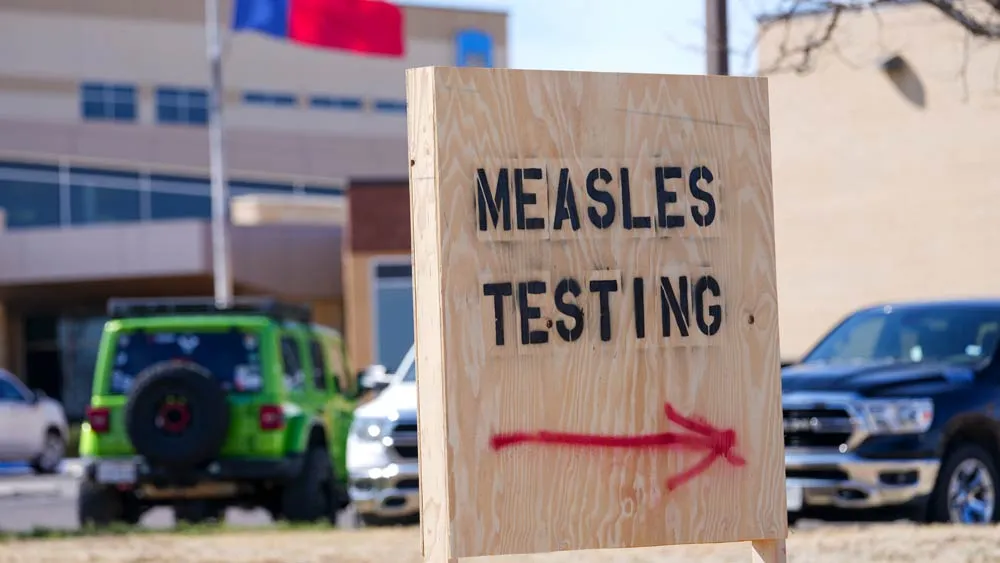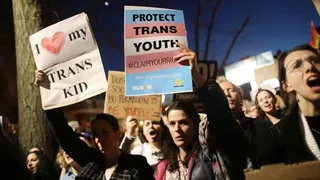December 26, 2012
Report Links Poppers to CA Gonorrhea Cases
Chris Sosa READ TIME: 6 MIN.
A new report issued by state health officials indicates that usage of poppers is high among gay and bisexual men in California who test positive for gonorrhea.
The data also shows that self-reported meth use in the same cohort of men who have sex with men has steadily declined since 2007. Heterosexual men and women who contracted the sexually transmitted disease who were later contacted by state health officials also reported decreases in meth use.
Based on the data, popper usage "seems fairly common in the group of MSM with gonorrhea," said Dr. Heidi Bauer, chief of the STD Control Branch at the California Department of Public Health.
The State of California Sexually Transmitted Disease Control Branch has received special funding from the federal Centers for Disease Control and Prevention since 2007, said Bauer, for what is called the California Gonorrhea Surveillance System in order to understand the changing trends in gonorrhea rates.
Field workers interview a subset of the people who contract the STD each year and ask them a series of questions "in order to collect risk factor and clinical data on cases beyond what is routinely available through case morbidity reports," explains the study.
In 2011 1,495 people infected with gonorrhea took part in the surveillance, with 572 identifying as MSM.
"We can see over time what factors may be involved in disease transmission," explained Bauer.
In 2007, roughly 20 percent of MSM who tested positive for gonorrhea and were contacted by state health officials said they had used meth in the past 12 months. Last year that number had dropped to 12 percent among the 538 MSM who answered the question.
Out of 84 MSM living in San Francisco County, nine men, or 11 percent, said they had used meth in the previous 12 months. The state DPH also interviewed 47 MSM from the other Bay Area counties, with six, or 13 percent, who admitted to using meth.
The numbers of MSM with gonorrhea who said they had used poppers, or amyl nitrate, was considerably higher. Statewide 109 out of the 538 MSM respondents, or 20 percent, said they had used poppers in the 12 months prior to their gonorrhea infection.
In San Francisco 28.6 percent of the 84 participants had used the inhalant, while 18.8 percent of the 47 MSM from the Bay Area said they used poppers.
The survey did not ask why men were more likely to use poppers and less likely to use meth. Nor can health officials be certain how usage of such drugs leads a person to contract an STD.
Bauer speculated that there might be some correlation between poppers used in sexual situations and a decreased ability to negotiate safer sex with one's sexual partners.
"We don't know if these things are driving these epidemics of STDs," said Bauer. "They may impair people from making good decisions that may impact their health. Anecdotally, people may have difficulty using condoms or making good decisions around sexual partners."
The detailed surveillance information is giving some insight for why gonorrhea cases are increasing in California, particularly among MSM.
Health officials have long suspected that increased testing and more advanced screening was partly behind the rise in the STD among men who have sex with men. Sexually active men are not only encouraged to get STD tests every three to six months, they are also advised to get rectal and pharyngeal tests, as infections in the rectum and throat can be asymptomatic and easy to miss.
Making inroads
The recently released data also provides evidence that testing and screening are not the only contributing factors to the rise in gonorrhea. It also shows that the sexually transmitted disease is making inroads in California.
"That is an indication that there is increasing risk behavior or more gonorrhea is circulating in the community," said Bauer. "I think that until a vaccine is available, we are always going to be struggling to contain infections of STDs."
In California gonorrhea cases among MSM have increased from just above 6,000 in 2007 to approximately 10,000 in 2011. Of those, 26.9 percent report being HIV-positive.
Gay and bisexual men account for 60.8 percent of the state's male gonorrhea cases or roughly 39 percent of all cases, which totaled 27,455 in 2011.
Bauer said that the state has noticed more symptomatic urethral infections.
"The reality is when a guy has gonorrhea urethrally, it is very painful. They will go into a clinic or see their doctor to get an antibiotic," she said. "It is not something driven by test sensitivity or more screening. It is really people presenting with symptoms and that was also going up."
As the Bay Area Reporter noted in a September 6 article, gonorrhea cases in California had numbered 31,191 in 2007 and fell to 26,842 cases in 2010. But last year saw the number of cases increase to 27,455 statewide.
"When I first looked at the data I thought, of course, it is increasing because we are doing a better job of screening. But when I looked more closely at the data and saw symptomatic infections going up, I had to step back and say it is not just more screening," said Bauer.
Rates of gonorrhea have been steadily climbing in San Francisco for several years now. The numbers rose 15.5 percent last year compared to 2010 for a total of 2,244 cases. As of October the city had recorded 2,127 cases so far in 2012.
According to the state report, 83 percent of the city's gonorrhea cases in 2011 were among MSM. In the other nine other Bay Area counties, MSM accounted for roughly 26 percent of gonorrhea cases.
The numbers in the report aren't a surprise, said AIDS Healthcare Foundation Bay Area regional manager Dale Gluth. He is pleased to see the state doing surveillance around gonorrhea.
"I think it is great it is happening because it does give us a more detailed picture," said Gluth, who previously worked at Magnet, the gay men's health center in the Castro.
Several of the findings in the latest report will be no surprise to gay men or those familiar with gay male culture.
MSM reported having more sexual partners than do heterosexuals and, since 2007, have increasingly turned to the Internet to find partners. Larger numbers of straight men and women are also turning to online sources to find sexual partners. A total of 524 women and 376 straight men took part in the survey.
Based on the survey responses, most heterosexual men and women had one or two partners in the three months prior to their gonorrhea infection (63.7 percent and 89.1 percent, respectively), and few reported five or more partners.
Among MSM, 35.2 percent reported five or more partners, according to the data, with nearly 18 percent of MSM having 10 or more. The report also found that use of the Internet to meet sexual partners increased most notably among MSM over the last five years, with 64.4 percent reporting meeting partners online in 2011.
"Seeing MSM report more sex partners isn't surprising," said Gluth.
The data on MSM does give a better picture to what local health officials have long contended, that many gay and bisexual men in the Bay Area seek out STD testing and treatment in San Francisco.
While the relatively few MSM from outside San Francisco who took part in the survey likely is the result of inadequate collection of sexual orientation demographic information, it also suggests that there is a lack of services for MSM outside of the city, said Bauer.
"San Francisco has excellent STD clinical services," she said.
The city's public clinics that offer STD screening, such as Magnet and City Clinic, also have done rectal and pharyngeal screening for years and may be finding more cases of gonorrhea than other locations. The report shows that correctional facilities and private physicians have the two highest proportions of cases receiving non-recommended gonorrhea treatment or no treatment at all.
"They have demonstrated in San Francisco they can pick up many more cases without symptoms when they screen those anatomical sites. It may be why San Francisco is seeing more cases," said Bauer.
Responding to the need for better services outside of San Francisco, AHF this month began offering STD screening for sexually active men at its Oakland wellness center. The STD clinic operates twice a week and has been averaging six patients a day.
"There are a lot more resources in San Francisco for STD testing. For us, it was more urgent to start in the East Bay where services are lacking," said Gluth, explaining that its sites in San Francisco right now mostly offer HIV testing.
AHF's new East Bay STD clinic for men offers urethral, rectal, and pharyngeal testing for chlamydia and gonorrhea. It also offers syphilis and HIV testing.
"I do know a lot of folks from the East Bay are coming to San Francisco to get tested because there are not a breadth of services there. I hope to put a dent in that to some degree by running the wellness clinic and expanding its hours as need dictates," said Gluth.
The AHF Out of the Closet store offers the STD screening for men from 3 to 7 p.m. Mondays and Saturdays. It is located at 238 East 18th Street on Lake Merritt.
To download the state report, go to http://www.cdph.ca.gov/data/statistics/Documents/STD-Data-CGSS-Regional-Data.pdf.






